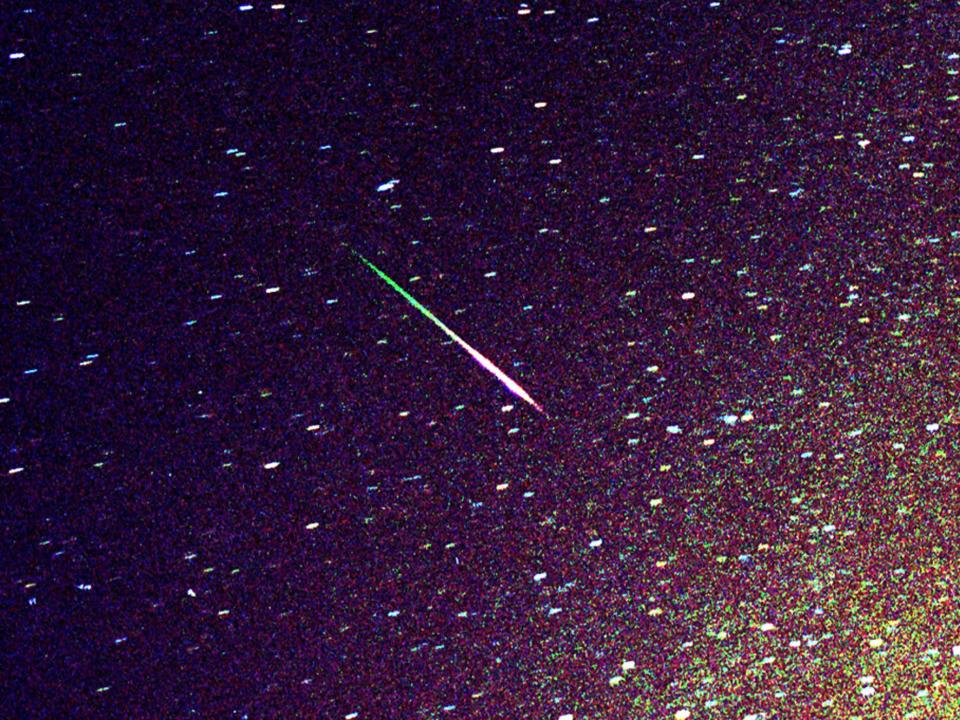The Leonids meteor shower sends bright green shooting stars across the sky early this week. Here's how to see them.

ESO
The Leonids meteor shower peaks Monday night, with about 15 meteors streaking across the sky per hour.
The waning gibbous moon will be bright, but you can still see some green shooting stars.
The Leonids have made for spectacular meteor storms in the past, with up to 100,000 shooting stars each hour. The next one of that scale will appear in 2099.
Here's how you can see the shooting stars on Monday.
The Leonids meteor shower is sending bright green shooting stars across the night sky this week.
The show's peak started Saturday night and runs through Monday night, though the meteors will continue at lower rates through November 30.
The moon might outshine them as it wanes gibbous — the full moon is over, and it's just starting to pass into shadow — but you can still catch a few meteors. Expect about 15 per hour.
Tweet Embed:
//twitter.com/mims/statuses/1196279585903718401?ref_src=twsrc%5Etfw
The Leonids meteor shower peaks tonight. I caught this meteor earlier this evening prior to moonrise. View is looking NE with the lights from Peabody, Kansas illuminating a few clouds. #Leonids #meteor #KSWX #Kansas pic.twitter.com/MKjDGv3lR7
The Leonids appear as Earth hurtles through the field of rock and metal debris left behind by the comet Tempel-Tuttle each time it passes by. As the rocks collide with our atmosphere, they burn up in streaks — also known as shooting stars.
Because the metals are rich in iron and magnesium, the Leonids often leave bright green tails in their wake.

REUTERS/Jim Hollander
Avid stargazers know the Leonids for bringing meteor storms — exceptionally thick and spectacular meteor showers.
The last Leonids storm in 1999 produced about 3,000 meteors per hour. But that paled in comparison to the storms of 1833 and 1966, when 100,000 shooting stars streaked across the sky every hour.
"The great Leonid meteor storm of 1833 did more to spawn the study of meteors than any other single event," the American Meteor Society says on its website.
The Leonids won't make another storm like that until 2099.
Tempel-Tuttle will pass Earth again in 2031 and 2064, according to EarthSky. The comet takes about 33 years to orbit the sun.
How to watch the Leonids

REUTERS/Ognen Teofilovski
Find a dark spot with a clear view of the sky, ideally far from city lights. Meteor showers are best after midnight, when your side of the Earth faces towards the direction the planet is rotating. That way you catch meteors as they collide with our atmosphere head-on, making for much brighter explosions.
Since the moon is bright this week, it's best to keep it out of your field of vision. See if you can stand in the shadow of a building to hide it. Otherwise, face away from the moon.
Turn to face the constellation Leo, where the Leonids appear to originate (that's where they get their name). Then sit back and watch for streaks of green.
After the Leonids, the next meteor shower to look for will be the Geminids, which peak on the night of December 13.
NOW WATCH: Here's what you're actually seeing when you spot a meteor shower
